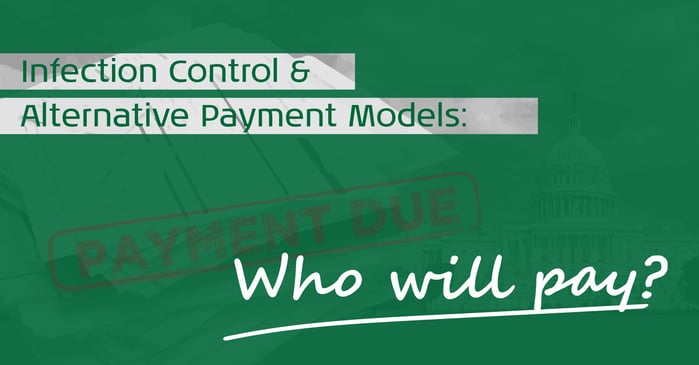 As hard as it is to believe, most hospitals do not know how much their services cost. They know what they charge, but that number has almost nothing to do with what individual services actually cost them as providers. This is about to change. With shockingly rising healthcare costs (17% of our gross national product, and rising at 4% per year) and frighteningly shrinking coffers with which to pay for it, there is a growing movement to move from fee-for-service payment models to alternative value-based payments. As we move towards these new cost-reducing models, what will be the impact on infection control?
As hard as it is to believe, most hospitals do not know how much their services cost. They know what they charge, but that number has almost nothing to do with what individual services actually cost them as providers. This is about to change. With shockingly rising healthcare costs (17% of our gross national product, and rising at 4% per year) and frighteningly shrinking coffers with which to pay for it, there is a growing movement to move from fee-for-service payment models to alternative value-based payments. As we move towards these new cost-reducing models, what will be the impact on infection control?
This is a big question, so today's post will start with infection control under a fee-for-service model. In our next posts, we'll explore alternative payment models and how they may impact infection control.
Volume over Value, Quantity over Quality
In fee-for-service, the predominant method of payment today, services are paid for individually - each service on an itemized bill. Fee-for-service can make a lot of sense. A healthcare provider performs a service made up of many steps, and each step is itemized on a bill submitted for payment to private insurance, to Medicare, or to the individual patient (or a combination).
The problem with fee-for-service emerges when implemented over the long-term. Hospitals, in their attempt to stay solvent, have come to see services as revenue-makers. The more tests, the more costly the diagnosis, the greater the revenue. In some cases, reimbursement for one particular service does not cover the full cost of that treatment, making hospitals push to recover that loss by the excess revenue generated by other services.
In an example of the term "perverse incentives," this model rewards the very things that can drive up healthcare costs: Unnecessary or redundant tests, emphasis on chronic conditions rather than prevention, lack of communication between providers, and a lack of a single entity to assume responsibility for tracking and managing costs. From the patient perspective, this model does not encourage healthcare providers to do better and work towards better outcomes for the patient.
Incentives To Reduce Infection
The fee-for-service model meant decades of hospital-acquired infections with no real financial incentive to reduce them. In fact, some would argue that the revenue generated by infections and other complications could be considered a reward at the expense of the patient.
This trend is reversing as pressure is applied with financial penalties from CMS for infection rates and private insurers no longer reimbursing for hospital-acquired infections. While the fee-for-service model still plays a role in overall rising healthcare costs, applying pressure to reduce infections and other preventable harm has been impacting the bottom line in a positive way for providers, payers, and patients.
Our next post will explore some of the alternative payment methods being tested in pilot programs nation-wide, some of which are achieving significant results. Stay with us as we dive deep into the complicated world of healthcare costs and infection control!
Editor's Note: This post was originally published in August 2017 and has been updated for freshness, accuracy and comprehensiveness.

